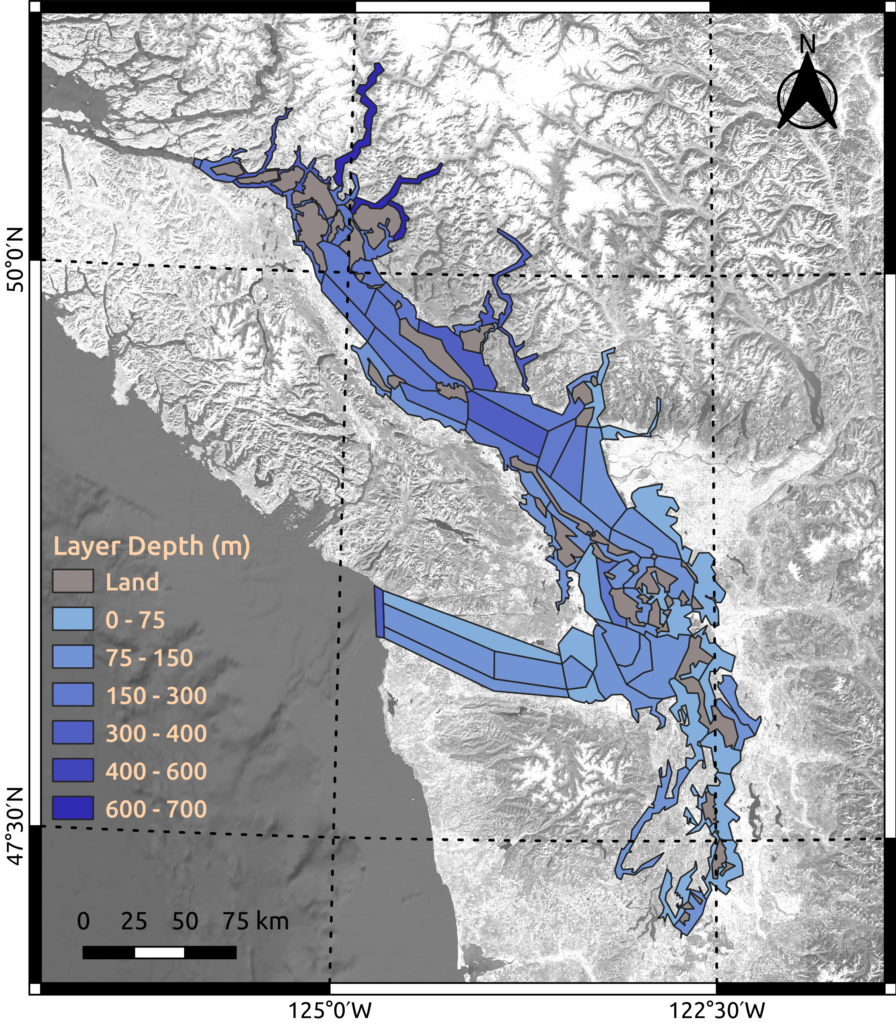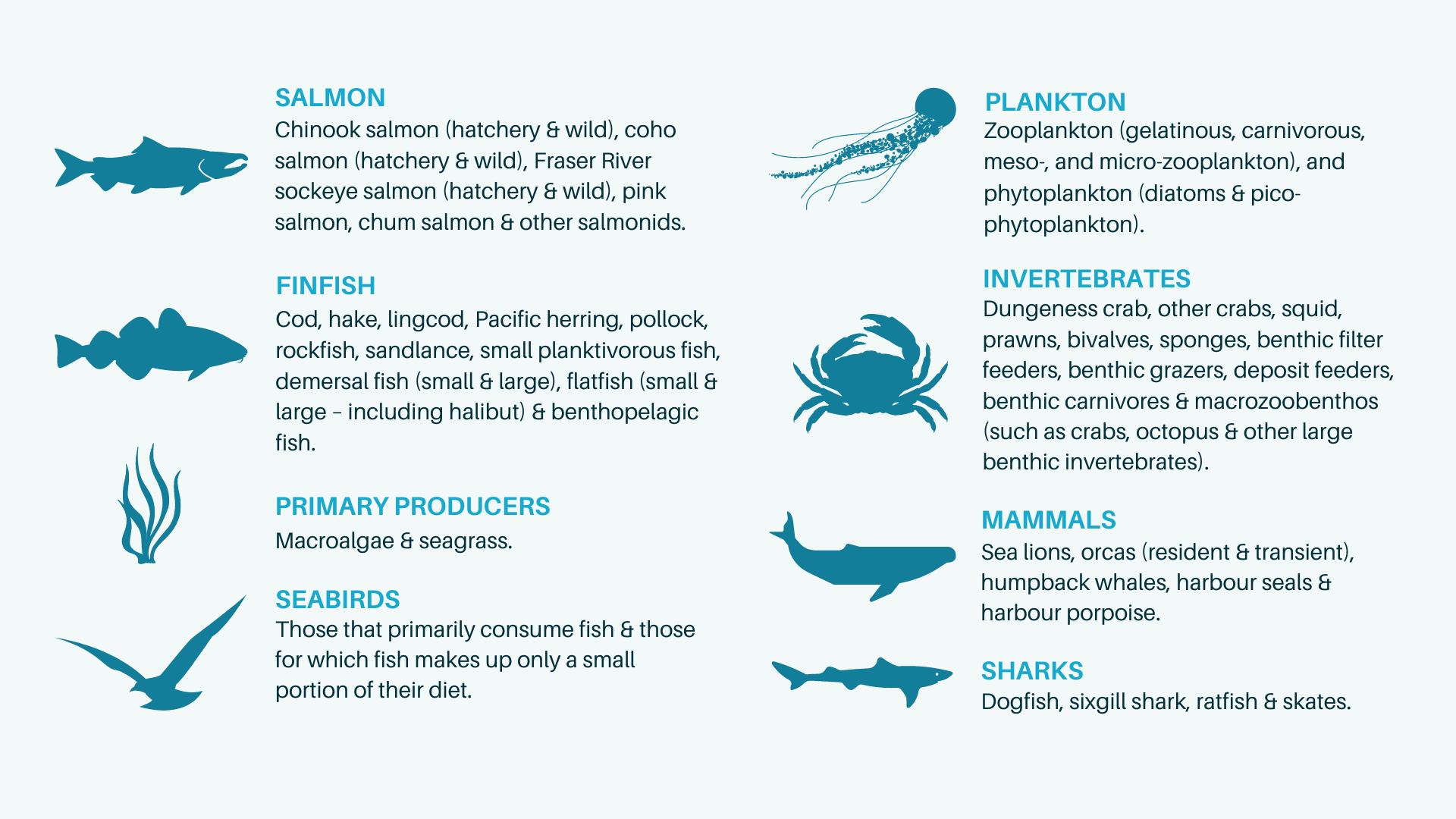Salish Sea Atlantis model
 The Salish Sea model is one of the most recent Atlantis models, and joins more than 40 Atlantis models from around the world. These models have differing levels of detail and have been developed for different purposes. Some are of coral reefs, for looking at climate change and ocean acidification; others model busy commercial harbours, looking at the implications of development scenarios, and how best to monitor and report on ecosystem heath; many Atlantis models are of ecosystems under fishing pressure. Across all these cases Atlantis is used to explore how the system works and how it might respond to critical events or management interventions.
The Salish Sea model is one of the most recent Atlantis models, and joins more than 40 Atlantis models from around the world. These models have differing levels of detail and have been developed for different purposes. Some are of coral reefs, for looking at climate change and ocean acidification; others model busy commercial harbours, looking at the implications of development scenarios, and how best to monitor and report on ecosystem heath; many Atlantis models are of ecosystems under fishing pressure. Across all these cases Atlantis is used to explore how the system works and how it might respond to critical events or management interventions.
The area covered by the Salish Sea Atlantis model (in blue). Each polygon represents an area that is characterised by similar physical and ecological properties.
What can this tool be used for?
Contaminants – By modelling the spread of contaminants, both in the environment and in the food chain, Atlantis can represent the lethal effects of an oil spill, as well as longer-term impacts on growth and reproduction. The types of oil included in this model are marine diesel, diluted bitumen, bunker C, and crude oil. With additional data, Atlantis has the potential to explore the impact of other contaminants too. Elsewhere in the world it has been used to look at the implications of nutrient run-off and heavy metal contamination.
Other stressors – As well as contaminants, Atlantis can be used to look at the combined impacts of climate change and human activities on the Salish Sea. Such impacts include extreme events (such as marine heatwaves, storms and pathogen outbreaks), ocean warming, ocean acidification, fishing, marine noise pollution, hypoxia, dredging, coastal hardening, habitat degradation and vessel strike. This allows managers to see how multiple stressors could affect the marine environment, and test management and mitigation measures to reduce their impact, helping to keep the Salish Sea clean and healthy for future generations.
 Strategic planning – Because it looks at the whole system, Atlantis is an ideal tool for understanding what impact different management approaches will have on the marine environment as a whole. Atlantis is not particularly useful for short term incident response or for fine scale tracking of spill dispersal, other tools are much better for that. Instead, Atlantis can be used to look at broad-scale patterns and hypothetical scenarios to explore both intervention and response options ahead of an event to assist with planning. For example, how different kinds of spills (based on the volume and kind of material spilt, its location in space, the time of year it occurs etc.) could play out ahead of time. This information can support response planning by allowing individuals to determine which management actions will be most appropriate in a given scenario and whether there are any unintended consequences of suggested interventions.
Strategic planning – Because it looks at the whole system, Atlantis is an ideal tool for understanding what impact different management approaches will have on the marine environment as a whole. Atlantis is not particularly useful for short term incident response or for fine scale tracking of spill dispersal, other tools are much better for that. Instead, Atlantis can be used to look at broad-scale patterns and hypothetical scenarios to explore both intervention and response options ahead of an event to assist with planning. For example, how different kinds of spills (based on the volume and kind of material spilt, its location in space, the time of year it occurs etc.) could play out ahead of time. This information can support response planning by allowing individuals to determine which management actions will be most appropriate in a given scenario and whether there are any unintended consequences of suggested interventions.
The species included in the model have been carefully chosen with the assistance of experts on the ecosystem to represent those species that are economically, ecologically and culturally important in the region. Where appropriate, these are gathered into groups with similar traits, an approach that can reduce the complexity of the model and its data needs without undermining the insights it provides.
Making the model work for you
We want to make sure Atlantis is as useful as possible. If there are outputs from the model that would be useful in your work, or specific scenarios you feel we should explore, please get in touch.
For more information about the Salish Sea Atlantis model and how it could support your work, please contact saramynott@uvic.ca. Visit the Atlantis website to find out more about how the tool has been used to address marine management challenges globally.


